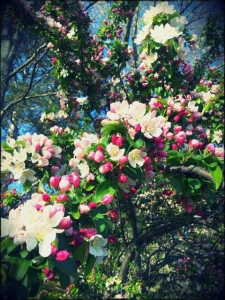“[Trauma sensitive yoga] helped to ground me and bring focus. It brought me back into the moment and felt really good. The power of suggestion is what did it for me…It allowed me to feel safer for some reason.”
This is a testimonial about a woman’s experience after participating in daily trauma-sensitive yoga (TSY) over the duration of a week. She is survivor of violence, who weathered homelessness for 3 years in the Vancouver East Side, a woman who has struggled with addictions and been incarcerated.
The learning experience I had in Boston felt like the tip of an ice-burg in a journey that will be integrated into my professional and personal life forever. Gaining insight into trauma has opened a doorway of endless learning, and I hope to commit my professional career to supporting people in recovery. Before I left Boston, the door continued to open with an invitation to enroll in a 110 hr trauma sensitive yoga teacher certification, the first one of its kind being offered. When completed this course, I will be 1 of 15 certified TSY instructors in the world who is so grateful for this foundation. As I immerse my self into teaching TSY, I am aware of the ongoing parallel learning process about trauma and recovery.
Since returning from Boston, I have been blessed with opportunities to apply trauma sensitive yoga within different settings – such as an outdoor expedition for women who were survivors of violence and within an addiction treatment center for young men. The experience of inviting people into an interoceptive journey, an opportunity to practice self-awareness and meet one’s self where they are at, has been both humbling and rewarding. Interoception is a physiological term used to describe ‘relating to stimuli produced within an organism’…the action of relating to and observing sensations in one’s body.
There have been amazing opportunities to see people shift challenging emotions and physical experiences through the practice of noticing their body and making choices – a core TSY principle. For example, I had one-on-one session with a young male client struggling with addiction and moving through a deep experience of grief and loss. He came to the session and shared he was feeling “weird” in his body, he felt like he had no physical strength, nauseated and generally uncomfortable. He chose to participate in a 20-minute session, in which we explored 3 different forms he selected. By the end of the session his eyes had opened wider and a shift in energy was evident. He later shared that the yoga experience helped shift his mood to be more present as he started to appreciate noticing more in his body – this journey of grief and loss felt different for him. It was one of his first experiences of allowing himself to feel the pain, instead of using substances to numb the hurt.
“There is nothing in western culture that teaches us that we can learn to master our own physiology – solutions always come from the outside, starting with relationships, and if those fail, alcohol and drugs.”
Bessel van der Kolk
I have also seen what gifts come from a safe and healthy relational experience a one-on-one TSY session. When two people engage in a process of exploring different yoga forms together, there is a reflective mirroring experience that supports a sense of resonance and connection with something and someone else. This relational principle is foundational to any person’s journey of recovery.
To support change we must transform one’s relational experience.
This was the theme repeated within several different workshops on trauma recovery presented at the International Trauma Conference…and a supportive relational experience is integral to any trauma sensitive yoga experience.
I could go on for longer, but I think I am getting my point across, TSY is an impactful experience for participants in recovery. As I dive deeper into the theoretical concepts informing trauma sensitive yoga and apply the practice, I am seeing rewarding and very impactful outcomes. The beautiful part is, the positive outcomes are not only beneficial for the participants in different sessions, but engaging and supporting me in my own journey of health, well-being, and learning.
All this being said, none of this research, learning, and teaching could have been possible without the Irma Parhad Program funding and the Calgary Center for Global Community. The funding supported me to – dream and live into a vision to support those impacted by trauma and to learn alongside David Emerson, someone leading the frontiers of trauma sensitive yoga.
So, thank you to those who support the Irma Parhad Program and engage people in their dreams to become unique contributors to social change.


